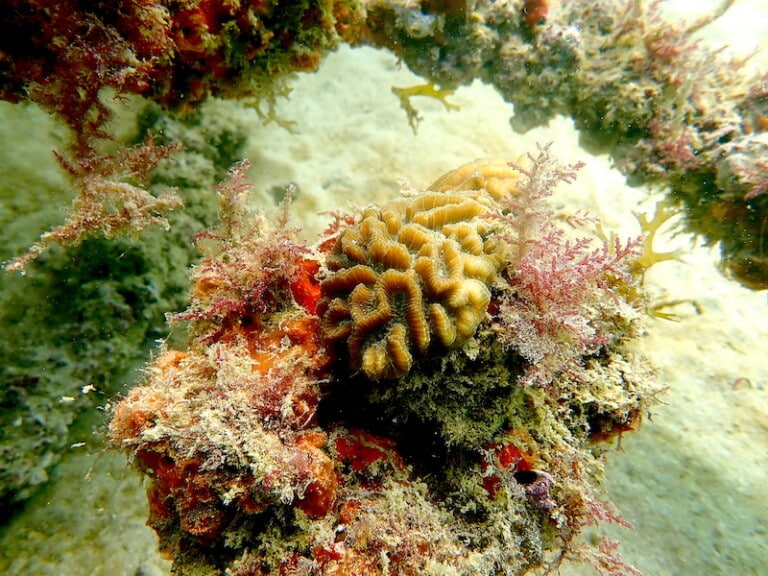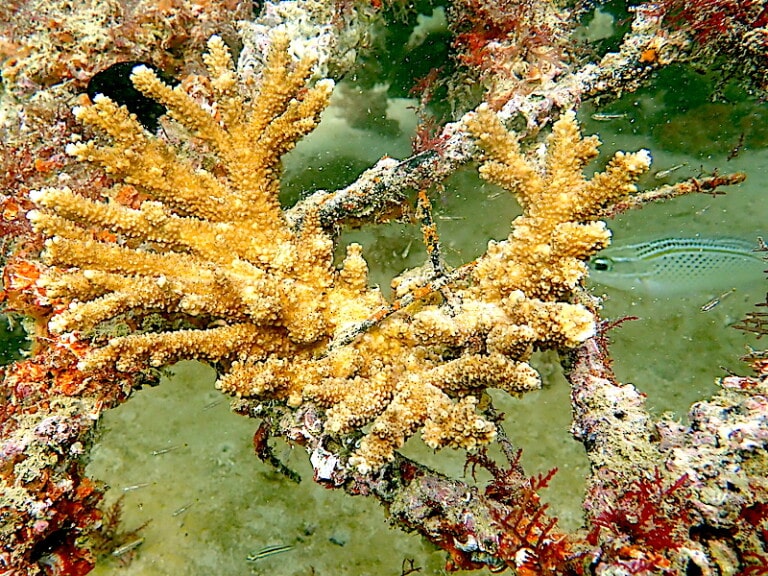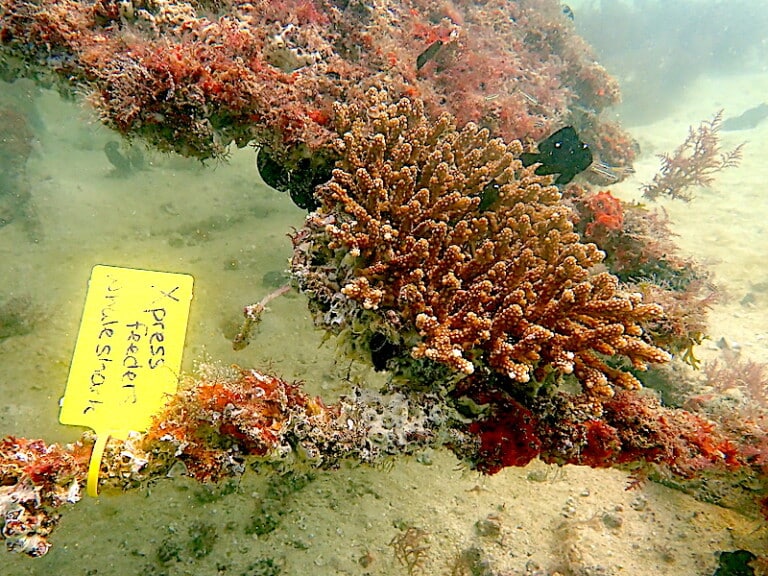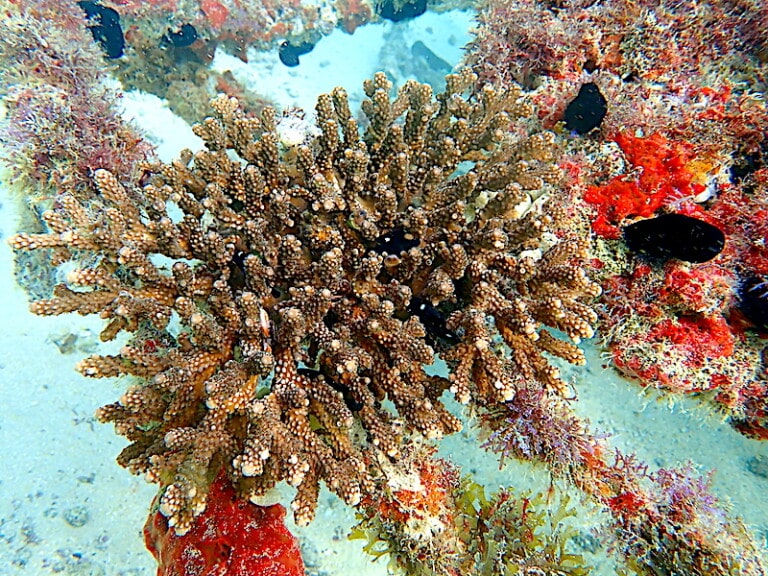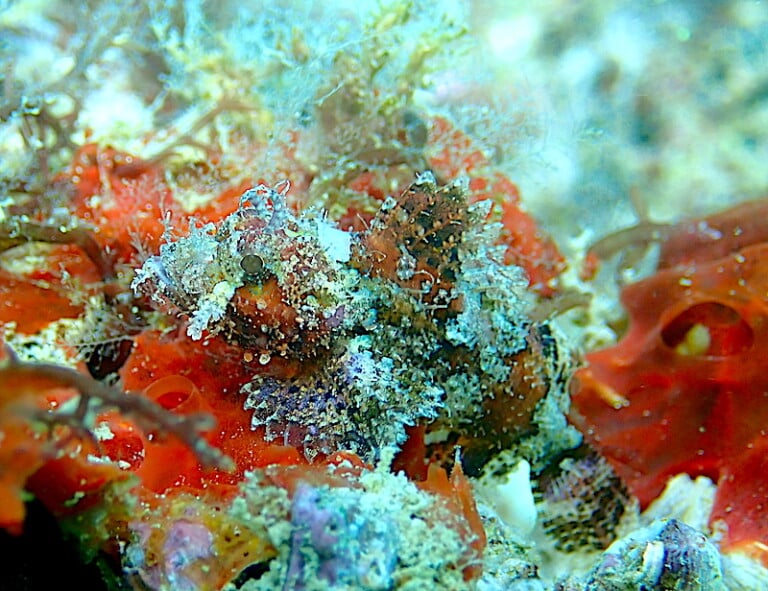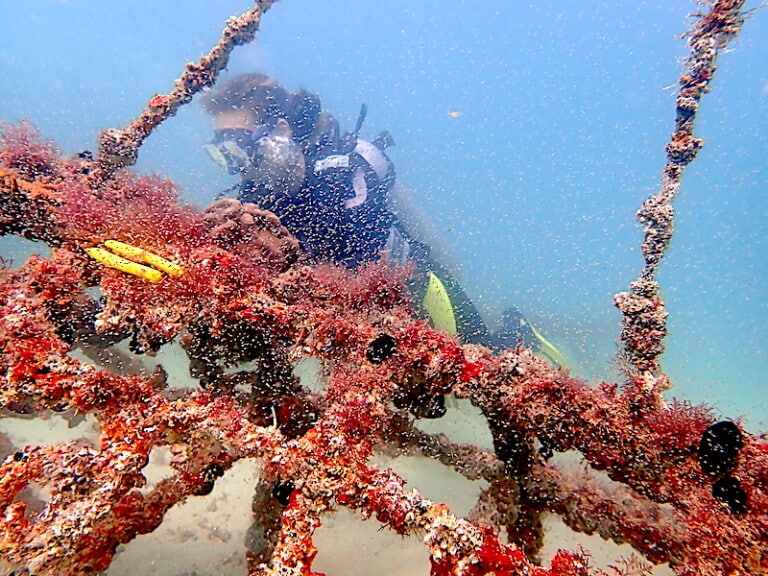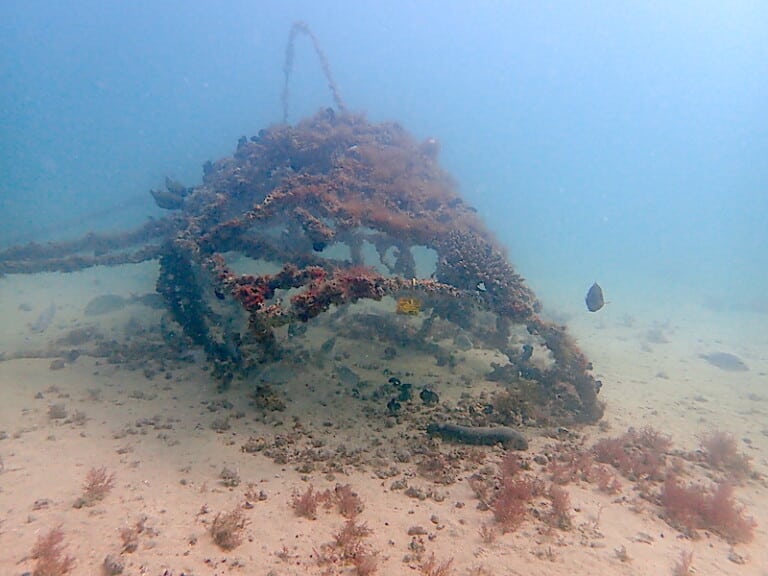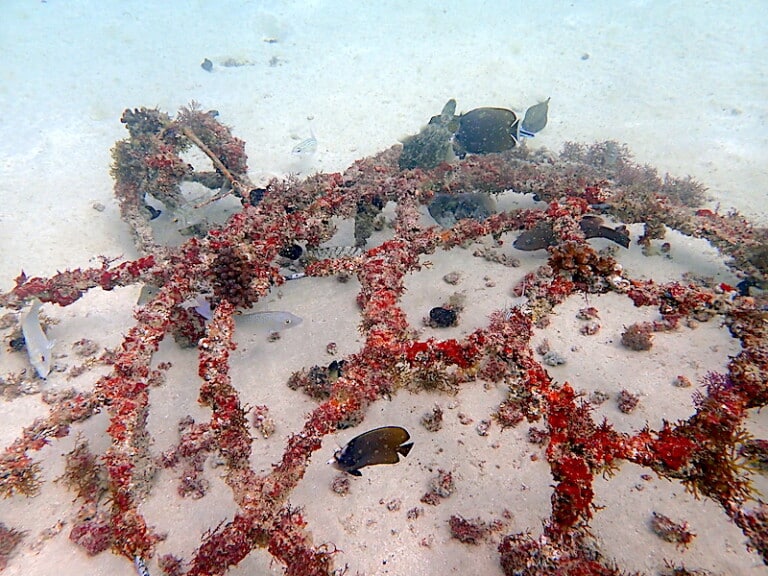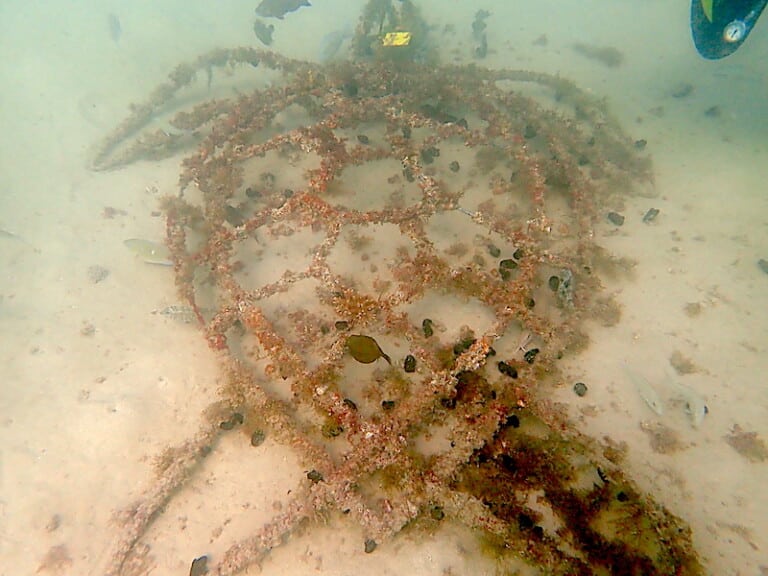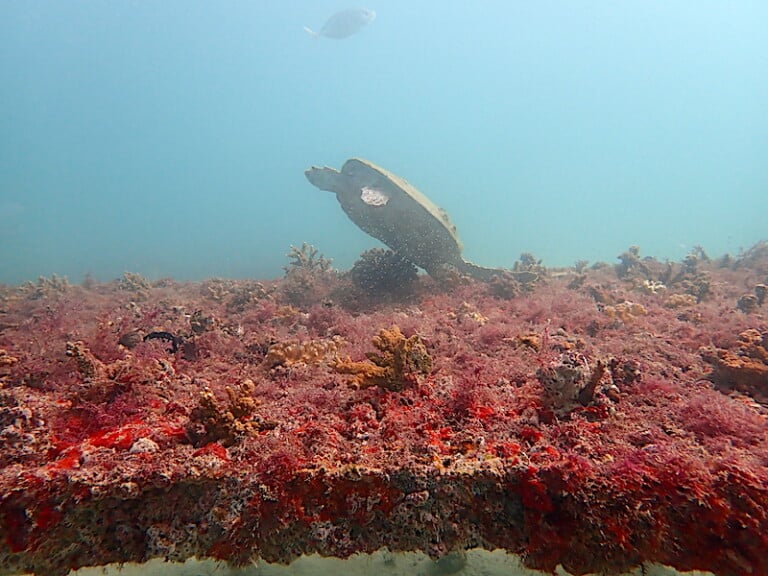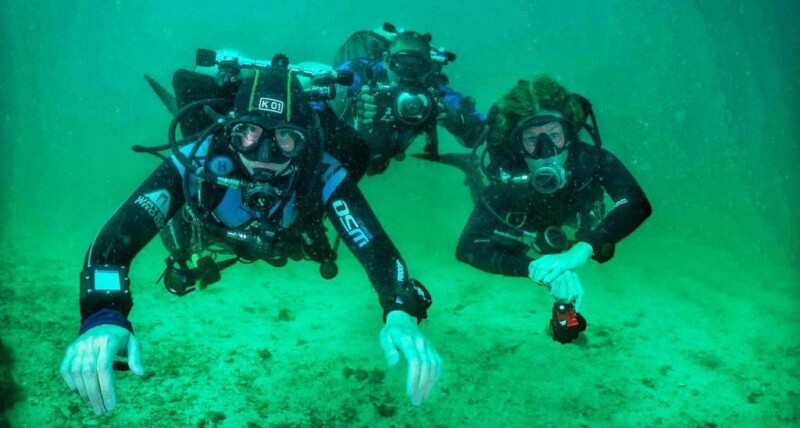October - December 2022
End of year update for Project REEFrame
In this last report for 2022, we define the status of Project REEFrame as a point of reference for the future. Using this as a baseline will help us highlight both the successful and less successful aspects of the project and allow us to define changes in experimental design that can be implemented in future projects to increase efficiency and productivity.
Corals competing for space
Coral, generally, is a sessile organism, which means it can grow but it can’t move. Corals, like trees, will grow to increase the amount of light they can capture, which in turn increases the amount of energy they can harness through photosynthesis. There is a phenomenon in forests called crown shyness, whereby the canopies of the trees do not touch; corals do something similar but a little more aggressive. As we mentioned briefly in the previous update, as corals grow on the reef and increase their surface area and size, inevitably they will grow to come into close contact with each other. Interestingly, if these corals are colonies of the same individual or genetic clones, they will join together, a trait exploited in micro fragmentation (more on that in a future report). If, however, the corals are of a different species, or different individuals of the same species, they will fight each other. They do this by firing their nematocysts at each other, which are stinging cells similar to those in a jellyfish; usually a white peace or impasse will arise, and the corals will form boundaries similar to those observed in tree crown shyness. Occasionally there will be a victor between the corals, in which case the victor will slowly grow over the loser, killing the flesh and growing upon the exposed skeleton.
Coral spacing
Acropora Muricata, a common branching coral species which we use in Project REEFrame, can eventually form colonies that measure over 10 metres in diameter. This is fantastic news when trying to help areas of the natural reef recover or when populating artificial sites such as those used on Project REEFrame. An easy analogy is that of planting oak trees, they must be planted far enough apart to accommodate their growth, ensuring that overcrowding and overshadowing does not become an issue as they mature.
Coral Morphologies
As hard corals grow to form the beautiful structures we find on reefs, they develop into different morphologies or structures (shapes). The same species of coral can even grow into different morphologies dependent on the conditions and topography of the area of the reef it is growing upon. Most species will have a general growth morphology which is by far the most common. As an example, Acropora is mainly found in a branching form, however it can develop into a digitate or a tabulate morphology when mature. These growth forms have generally been classified by scientists into the following types: branching, corymbose, digitate, encrusting, foliose, laminar, massive, sub–massive, tabulate and finally free living. Corals of different morphologies have differing growth rates; massive growth forms are generally regarded as the slowest growing and branching growth forms are the fastest. Fast growing branching corals are our focus at this point in the project, as we are looking to create habitat as quickly as possible.
Acropora corals
Acropora corals are commonly the dominant species in shallow areas of the reefs found around the world. There are 149 different species of Acropora that have been identified. These branching corals are often referred to as “staghorn” or “elk’ corals due to their similarity to antlers in appearance.
Acropora corals are distinguished by the white tip polyps and axial corallites around the branches. Shallow areas of the reef are exposed to the highest wave action so, particularly in storms, having a large vertical face would place very high-water pressure onto the corals and break them. The branching morphologies expressed by Acropora are more resilient to wave action because they have a minimal vertical profile, which means they can grow even in the more turbulent shallow waters.
Another bonus is that the thin branches are somewhat fragile, which may initially seem to be a disadvantage, however when the coral does break, the resulting fragments can have different beneficial outcomes. Firstly, they can be caught within the parent structure in which case they will reform to the parent. Secondly, they can be dispersed across the reef spreading or reproducing the coral asexually to other areas. Unfortunately, often these dispersed fragments do not find stable substrate and will be condemned to die as they become buried under sand or sediment. These are our primary source of coral fragments, and our eagle-eyed volunteers and colleagues are always on the lookout for healthy broken fragments that they can save by planting them on the coral nursery tables.
Project REEFrame 2023 Results
This section provides a data snapshot of each reef structure and the coral that has been planted on them.
How to use Flickr to access your footage
As mentioned in our previous report, we have uploaded all the still and video footage related to the project onto Flickr.com.
You will need to set up a free Flickr account and then send us the email address that you used for your account. We will set up your access and you’ll be good to go!
We have published a guide to help you with setting up and using your Flickr account here.
We have also provided a list of the tags used to classify the images, which you can find here.
Adidas Billboard Reef
The ADIDAS Parley, Run for the Oceans 3D printed concrete reef is a towering presence within the Project REEFrame Octopus Garden Site, acting as an interesting contrast to the other rebar style artificial reefs.
This is the tallest artificial reef on the Octopus Gardens site, which in turn means that its top surface is the shallowest point of all the structures; it will be interesting to observe how marine life reacts to this during the high temperatures of the summer months.
As you can see from the photographs, there is currently no manually attached coral on the structure, as we want to see if the substrate will promote natural coral recruitment. It is our intention in 2023 to attach some large mature corals to the structure when they become available.
The surface is populated with algal growth and Black Phallusia tunicates at present. The Phalussia tunicates potentially date from the time period when the structure was placed, they could have been spawning or perhaps they could just dominate during the early colonisation of structures before appropriate predation to reduce their numbers occurs. The predators of these tunicates are exclusively Angel fish, which won’t begin to populate the area until coral becomes more dominant.
Two spiny lobsters have taken up residence in the higher folds of the structure and with a little luck they are a breeding pair for the future, although at this point, they are definitely still juveniles.
A juvenile male green turtle is also commonly found on the structure taking a well-earned nap.
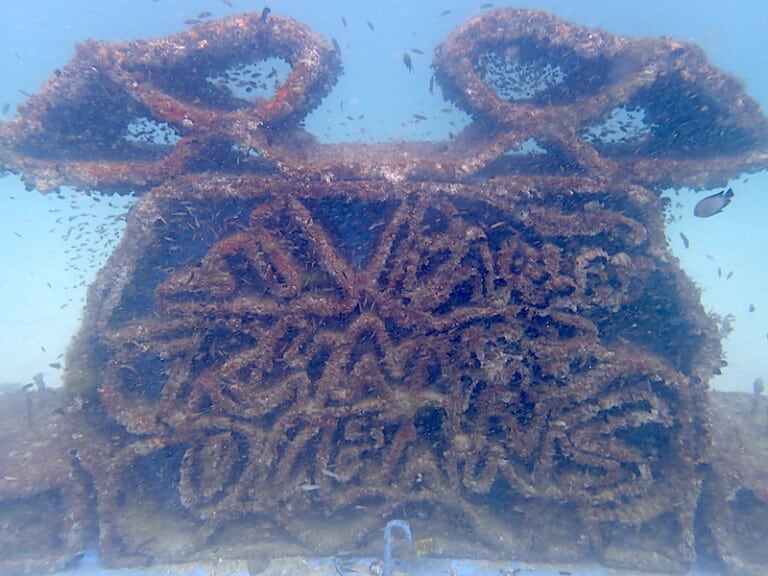
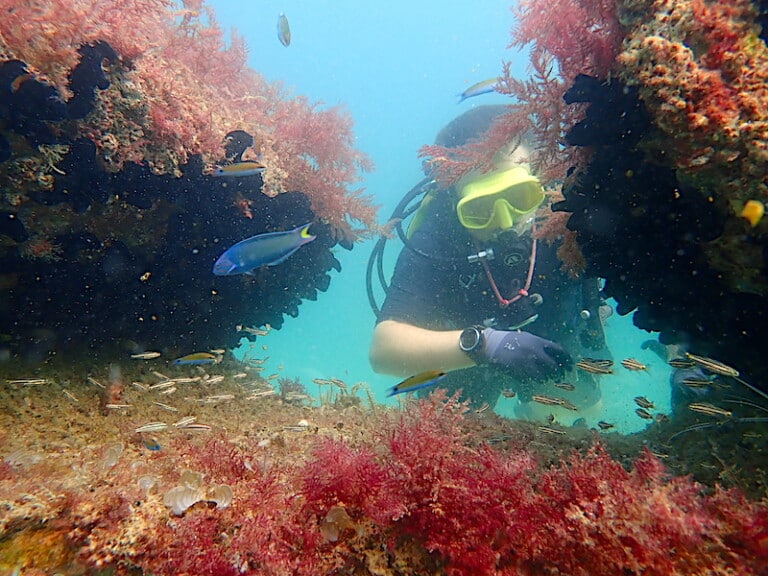

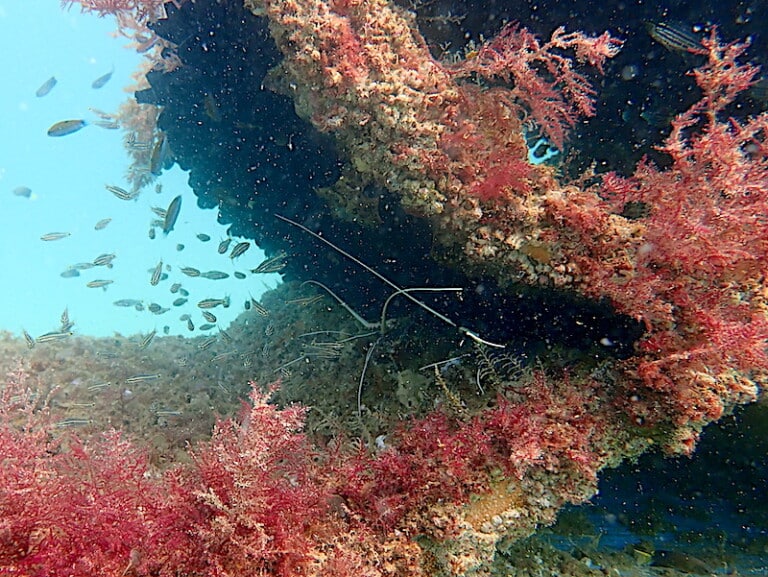
Azraq Shark Reef
The AZRAQ shark does not have any corals planted at this point; however, it has become a habitat for a school of Batfish amongst other species. Over the next quarter we intend to attach mature coral fragments to the structure when they become available from either the reef or from our nursery tables.
DELL Dome Reef
The DELL structure now has four coral colonies planted and attached.
As you can see from the photographs and from the data in the table the corals are settled, and they can continue their growth over time.
The largest of the corals on the structure is a Pocillopora coral with a surface area of 106cm2, which as we can see in the photos is healthy and already home to red coral crab Trapezia cymodoce, which will perform and establish the symbiotic relationship between them. The coral provides habitat for the crab and the crab in return keeps the coral clean of sediment, feeding on the detritus and epilithic algae in the area.

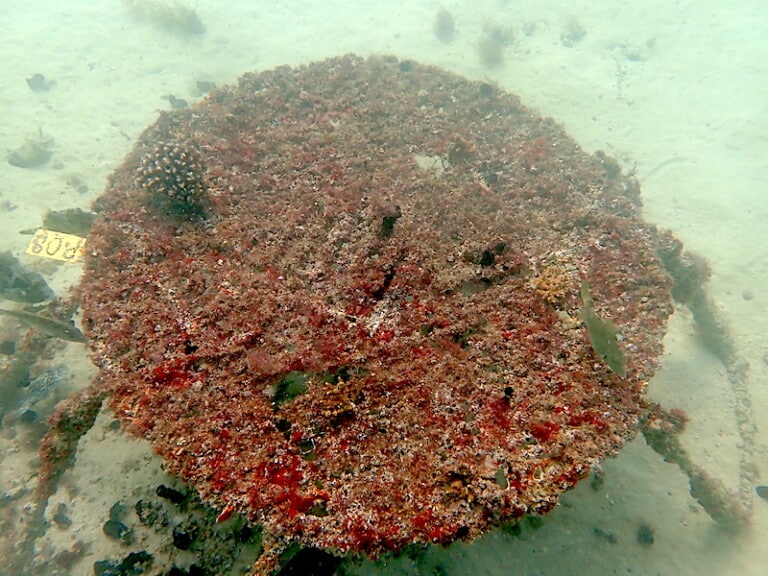
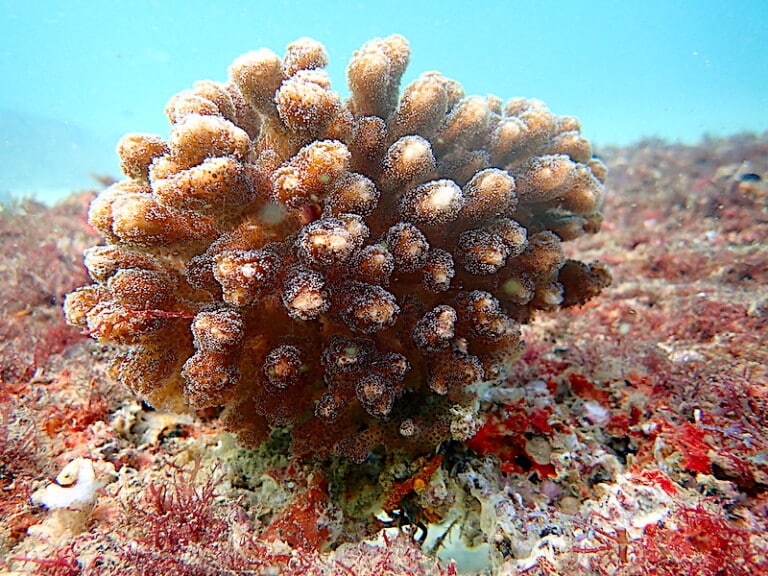

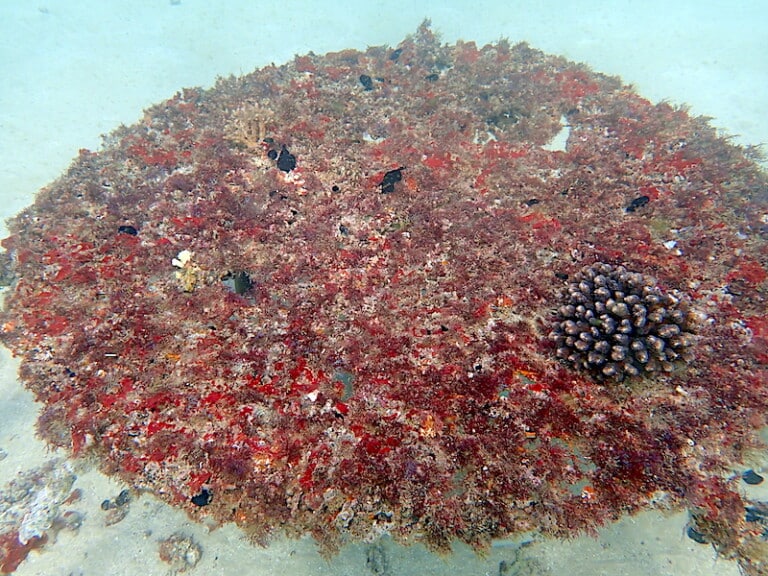
DITH MENA
DITH MENA have sponsored four reefs as well as nursery tables to grow coral to populate them. The status of each structure is described below.
Octopus Artificial Reef
The Octopus, as previously mentioned, is one of the stars of the site acting as a very good habitat for different species from green turtles to the feather star – Nemaster grandis.
This structure now has six established larger coral colonies, and the photos and data can be seen in the table below.
One of the coral colonies has unfortunately succumbed to a type of coral affliction called yellow band disease over the last six months; more on this in the next update.
This structure has our largest coral colony coming in at 590 cm2, which is an Acropora valida species of coral.

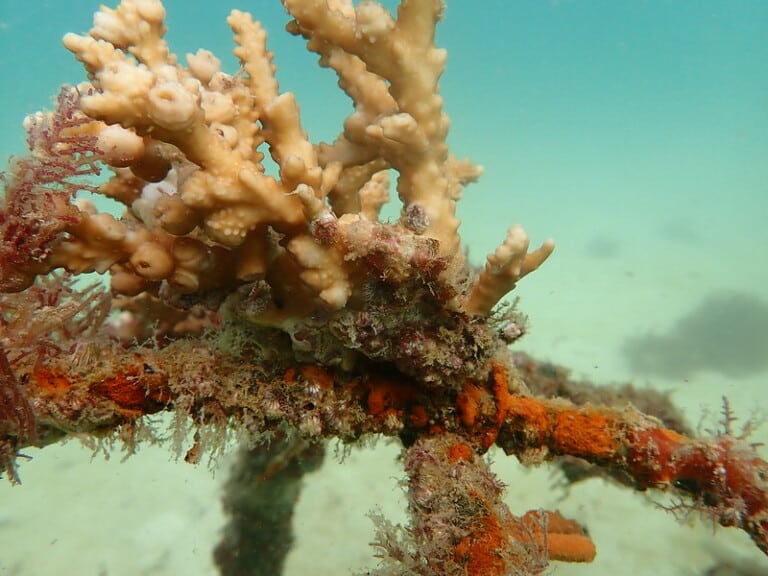
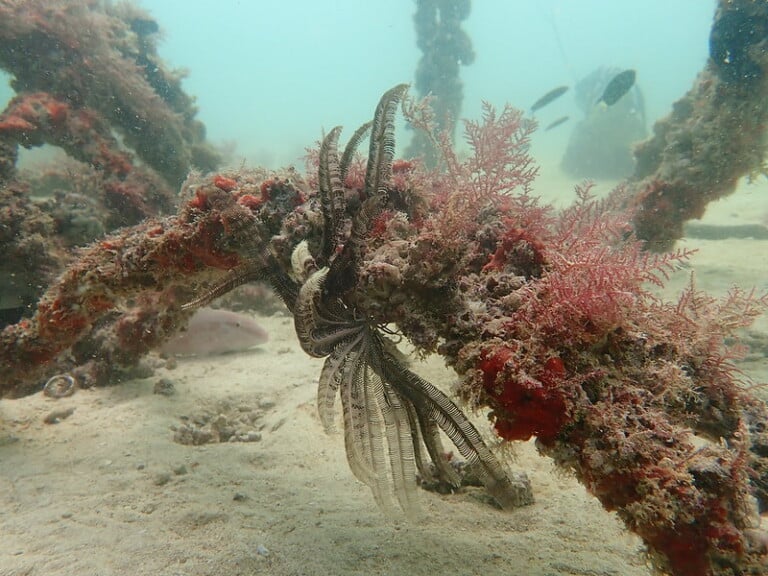
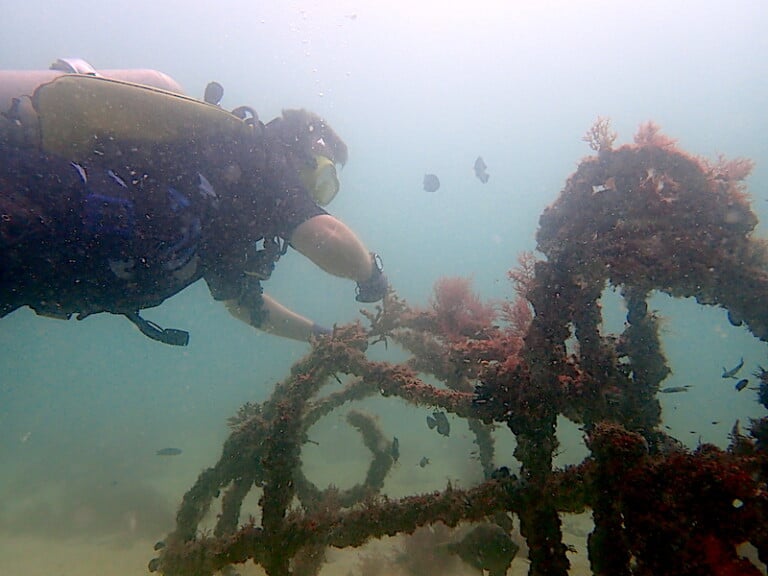
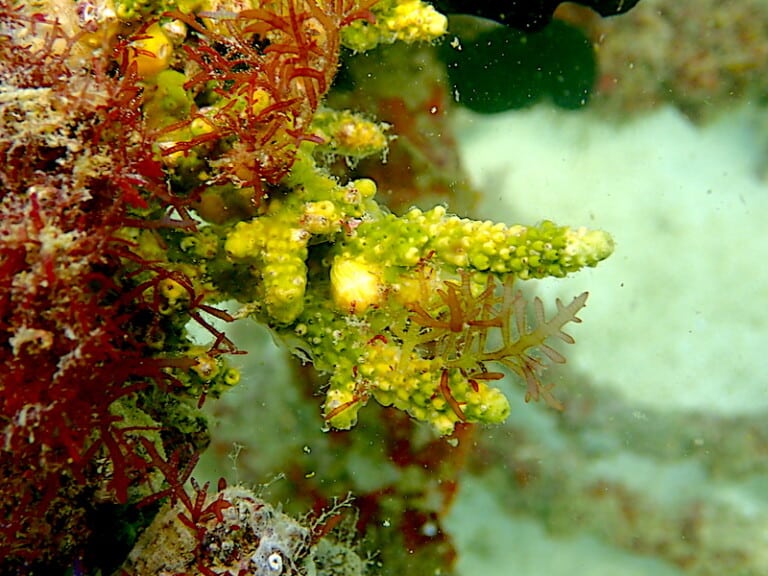
Tribulus Flower Artificial Reef
This small reef has four established corals, which will of course grow over time. Details can be found in the table and the photographs attached. This reef appears to be a breeding ground for the Indian dragon nudibranch Phidiana indica.

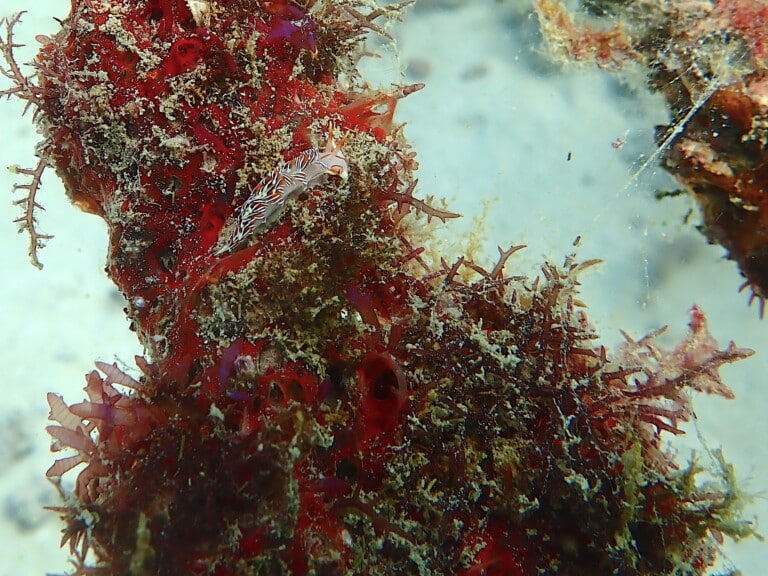
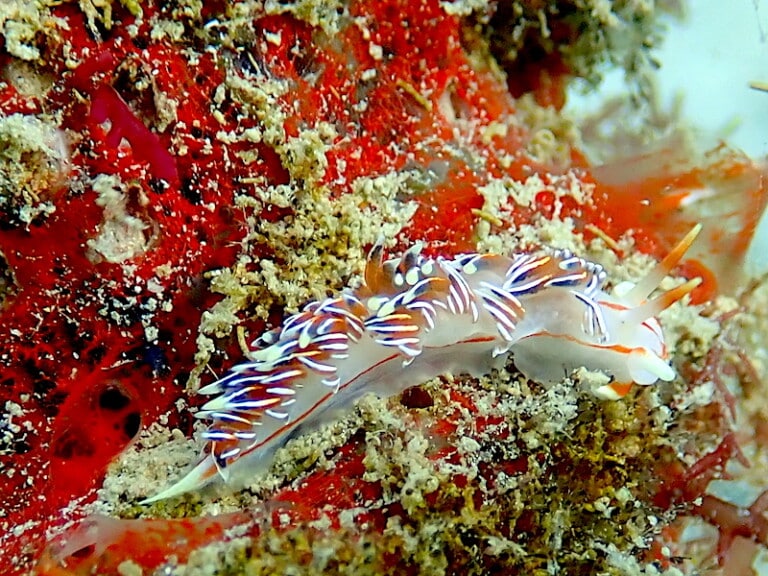
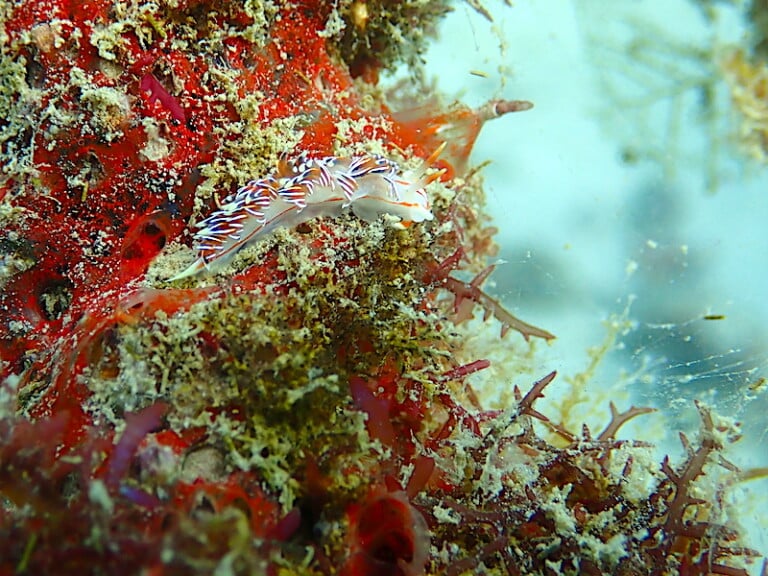
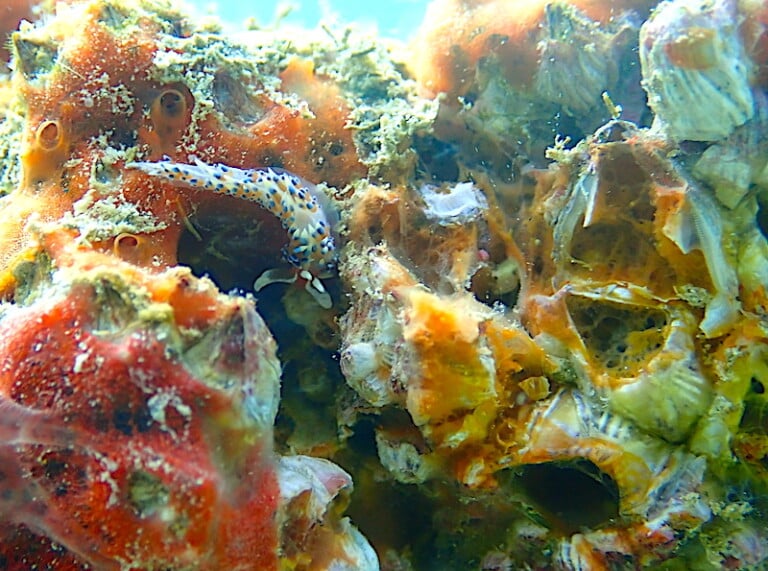
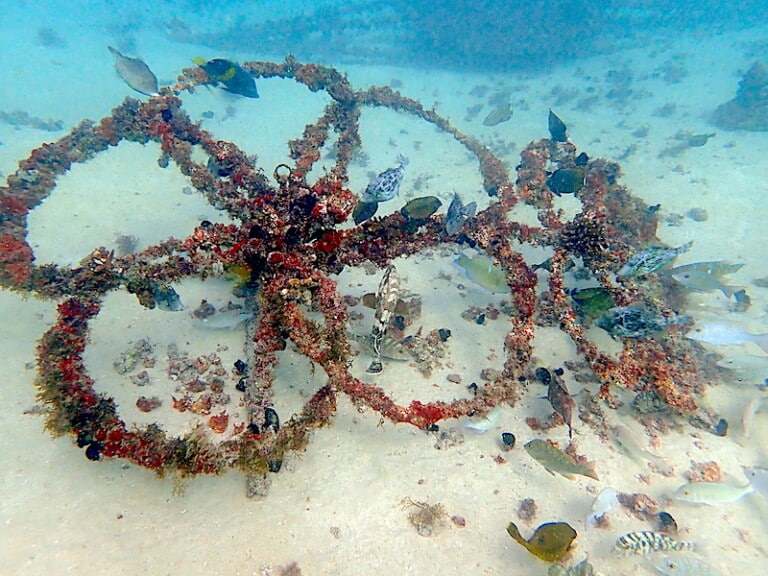
Stingray Artificial Reef
The Stingray has five attached corals which are flourishing, the details of which can be found in the attached photograph and table.
On this reef we have one of the few Stylophora coral colonies.

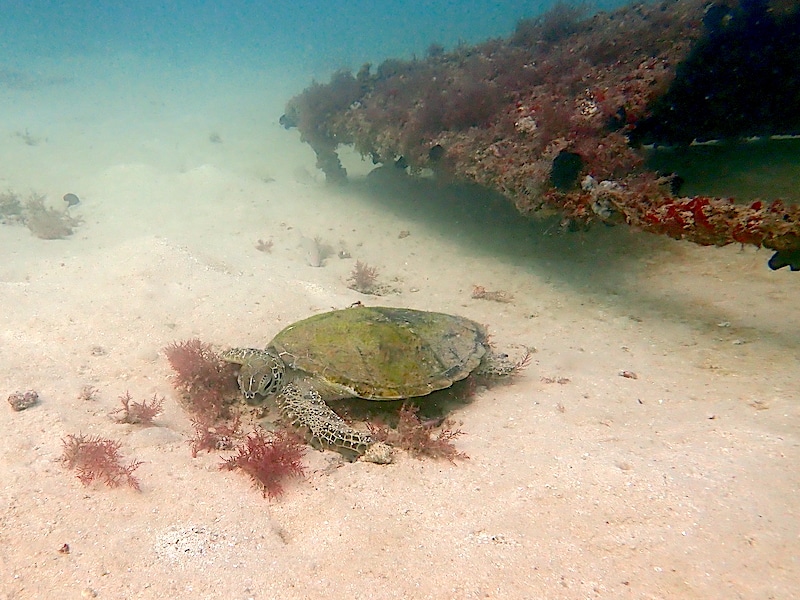
Turtle Artificial Reef
The turtle has four corals attached and the details can be seen in the photographs and table below.

These two tables are the heart of the nursery table work we perform with our group of volunteers. They meticulously tend to the fledgling corals, replace them in their hose sockets when clumsy turtles have dislodged them, and remove any coral predators such as the white sponge which envelops the corals.
After the last transplantations of 2022, the total remaining coral count for the two tables is currently 101 corals consisting of 70 Acropora and 31 Pocillopora coral colonies. Photographs of the table can be found below and on Flickr.
| Total Acropora | 70 |
| Total Pocillopora | 31 |

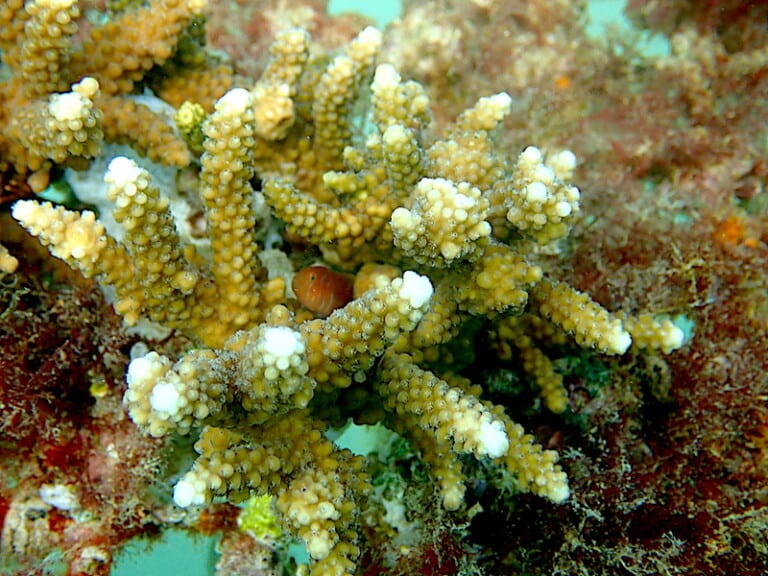
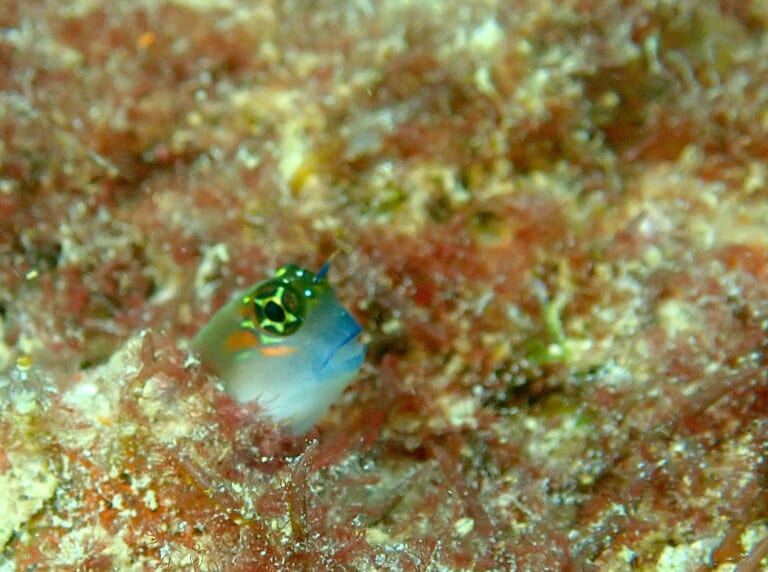
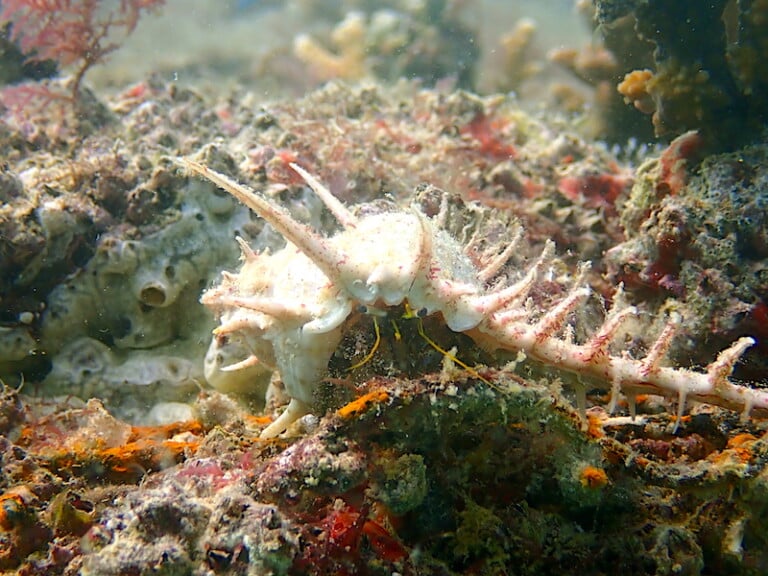
Dibba Bay Oyster Nursery Table
The Dibba Bay oyster table is a magnificent piece of engineering and as an initial test of a weighted base table has proven to be such a success that it is now a table design we offer going forward.
It has yet to be confirmed through data whether the habitat created by the base filled with oyster shells attracts increased marine life, promoting coral growth on the table surface, however this will be established over time.
The total coral count for this table is 51 consisting of 30 Acropora and 21 Pocillopora colonies.
Photographs of the planted corals can be seen below and on Flickr.
Total Acropora | 30 |
Total Pocillopora | 21 |
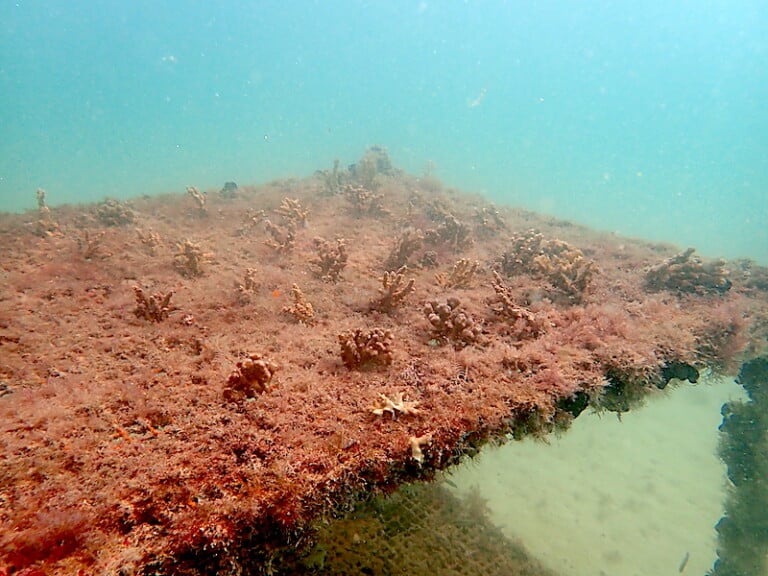
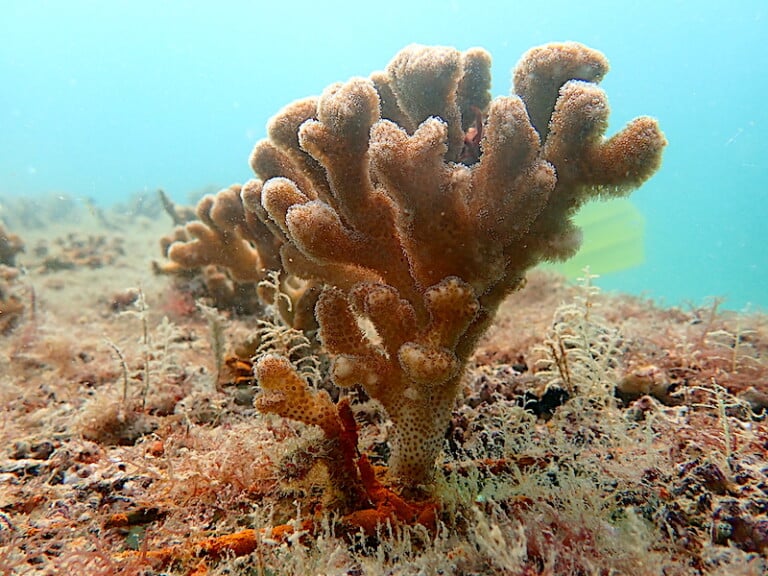
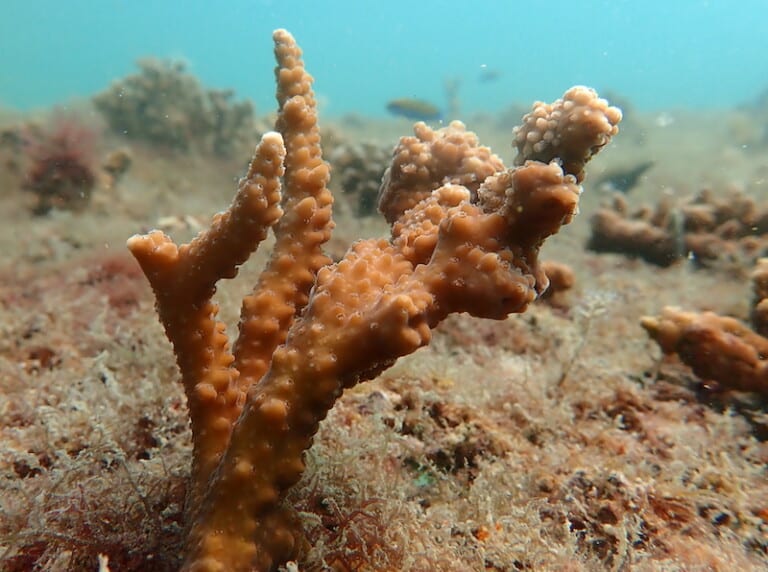

Dubai 92 Logo reef
This is one of our earlier structures that was constructed using a thinner hollow square bar as the frame, and like the tables we lost during the Cyclone in 2021, the 92FM frame has shown that the thinner metal rusts too rapidly.
The 92 logo remains intact, and we plan in the coming months to create a stronger frame to prop up the logo. Fortunately, the corals on the structure are still alive and well, although their current position just above the seabed means that they will be victim to increased sedimentation, which will hinder growth.
Details can be found in the table below and seen in the photographs on Flickr.

Dubai 92 School Competition Stingray
This was another one of our early reefs that initially had the thin square bar frame as a base. It was damaged in the 2021 Cyclone when the base detached from the main stingray structure.
The stingray now lies on the seabed without the base frame; however, it is still tall enough to act as a very good artificial reef. It has ten coral colonies planted on it, details of which can be found in the table below.
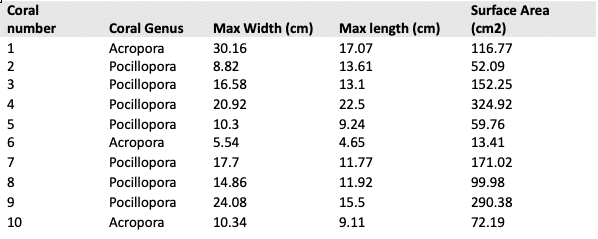
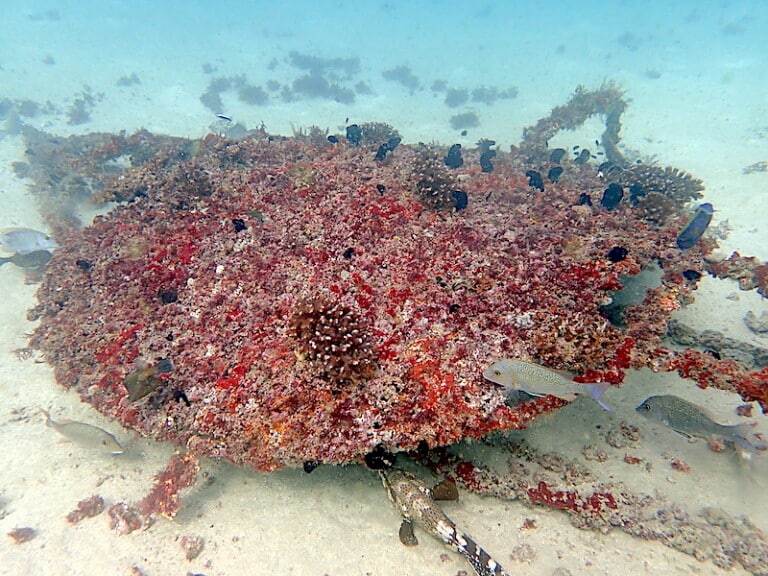
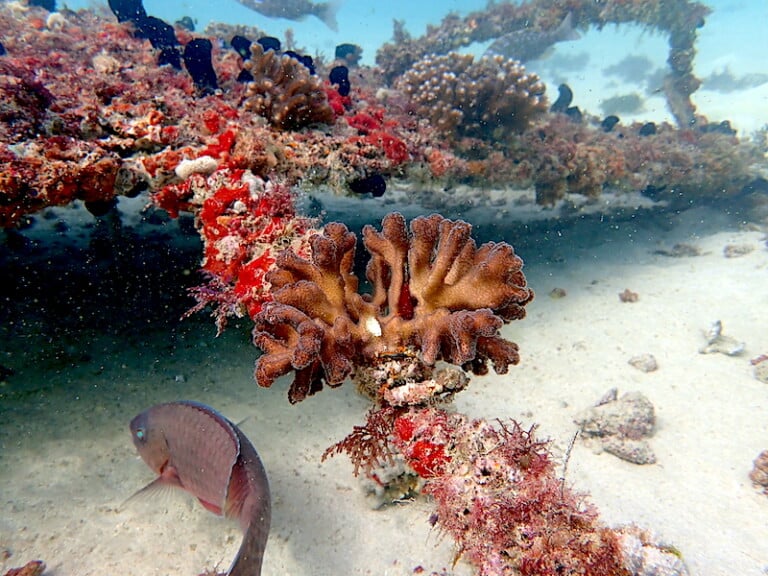
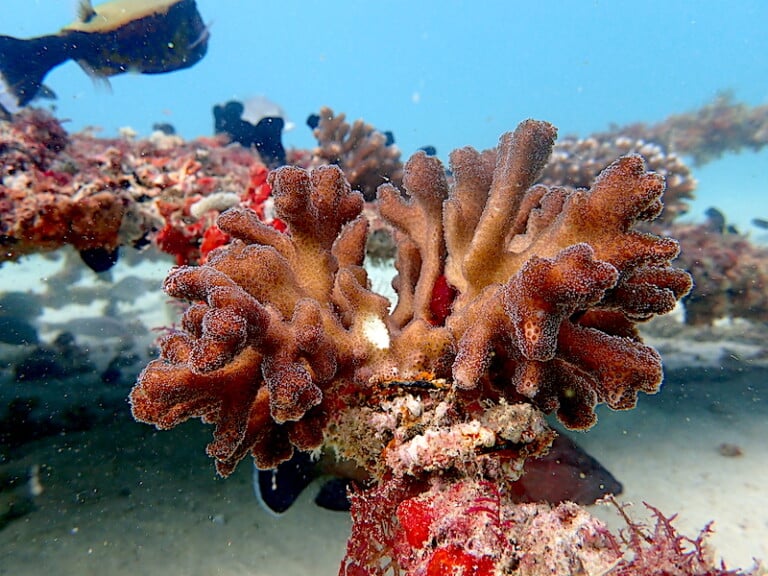

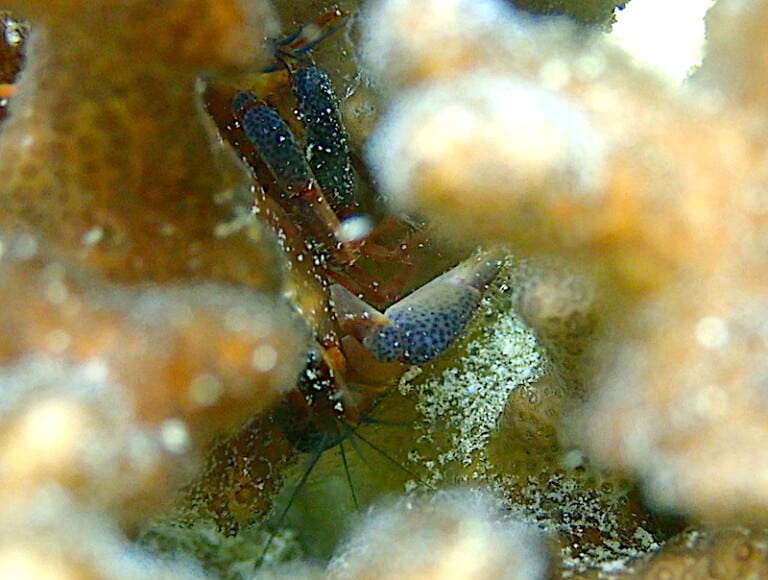

Firetti Turtle
This was our first turtle reef, and it is still doing fantastically well as a habitat for marine life, and it has seven coral colonies growing happily on it.
Details of the corals can be found in the table below and photographs can be found on the Flickr database.



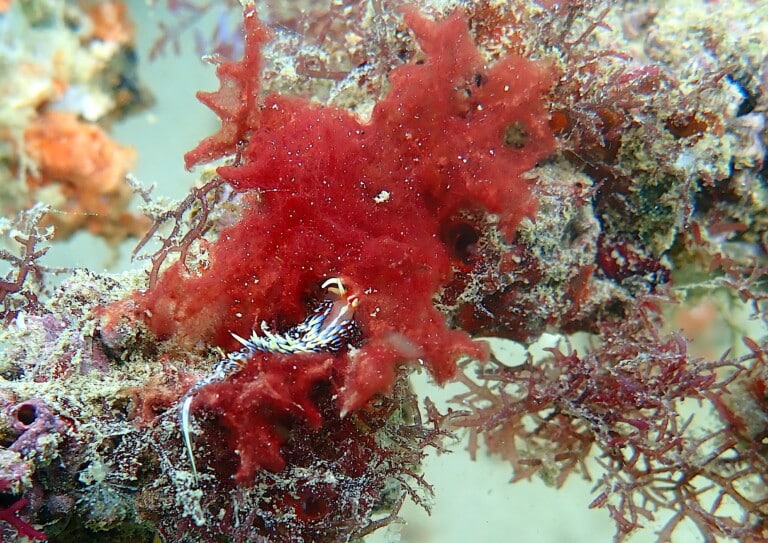
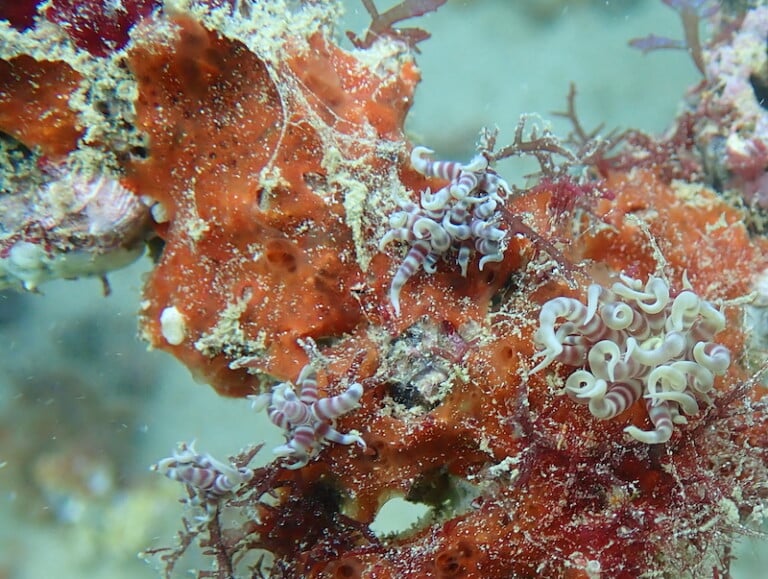
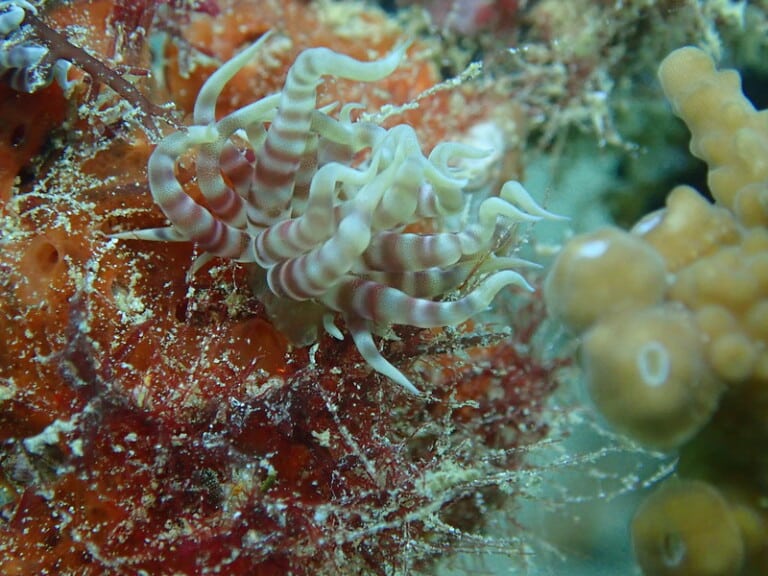
Guinness World Records Dome Reef
The Guinness World Records artificial reef is progressing well, seemingly going for its own record attempt for the most lozenge file fish per square metre. They seem to love hanging around within the structure and nipping the fingers of volunteers undertaking maintenance!
It is now home to an array of marine life, details of which can be found on the Flickr database.
The reef has four planted coral colonies and details of the coral found on the structure can be found in the table below

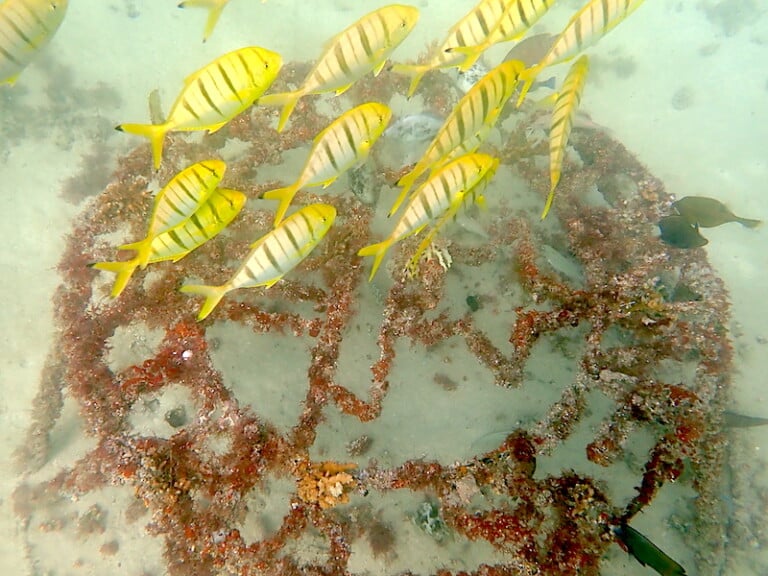
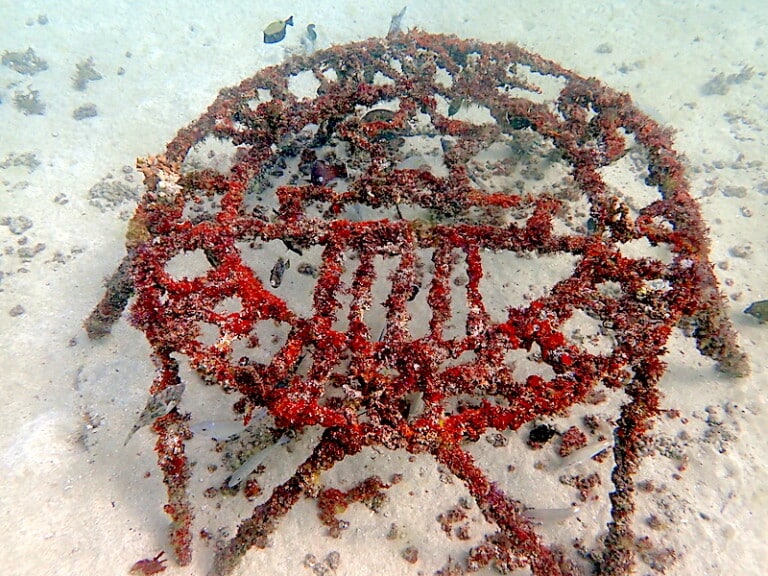

IDS Low Nursery table
The IDS Low Nursery Table is the pet project of two of our volunteers, who helped initially plant the table and regularly come to tend to their “garden”.
This table has a total of 49 coral colonies planted, 37 Acropora and 12 Pocillopora. A home to juvenile scorpion fish and long horn spider crabs, it requires a careful approach when maintaining the nursery, as these two species are very well camouflaged, and the scorpion fish is venomous.
Photos can be found below and on the Flickr Database.
Total Acropora | 37 |
Total Pocillopora | 12 |
MAERSK Turtle
A brilliant sturdy turtle structure which is now settled and fully planted with seven corals, the details of which can be found in the table below.
This structure also seems to be a breeding ground for the Indian dragon nudibranch Phidiana indica, much to the distraction of any volunteer wielding a camera!

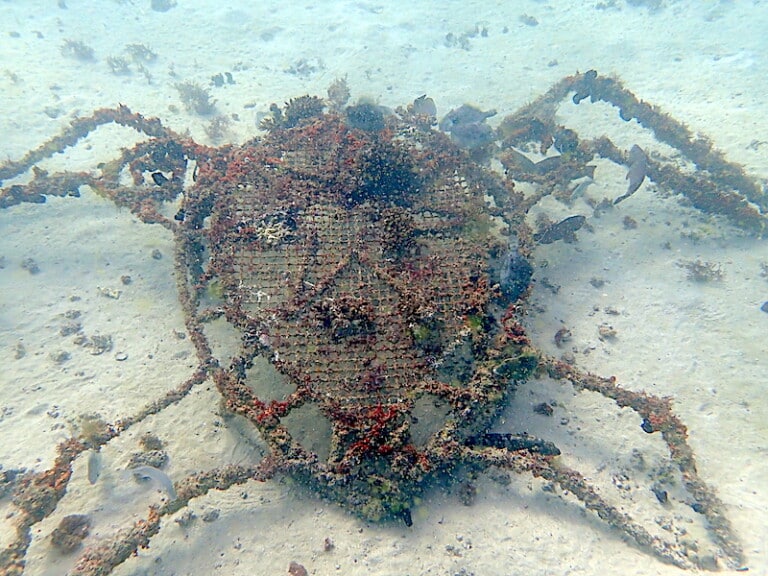
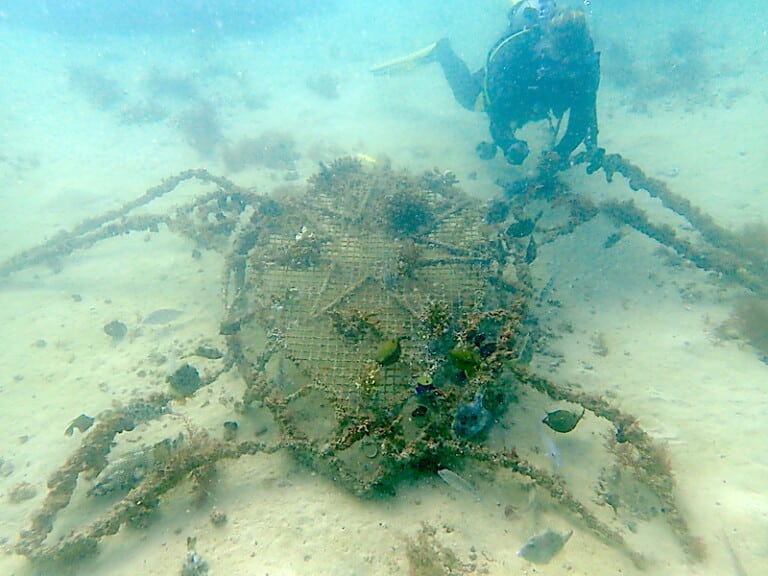
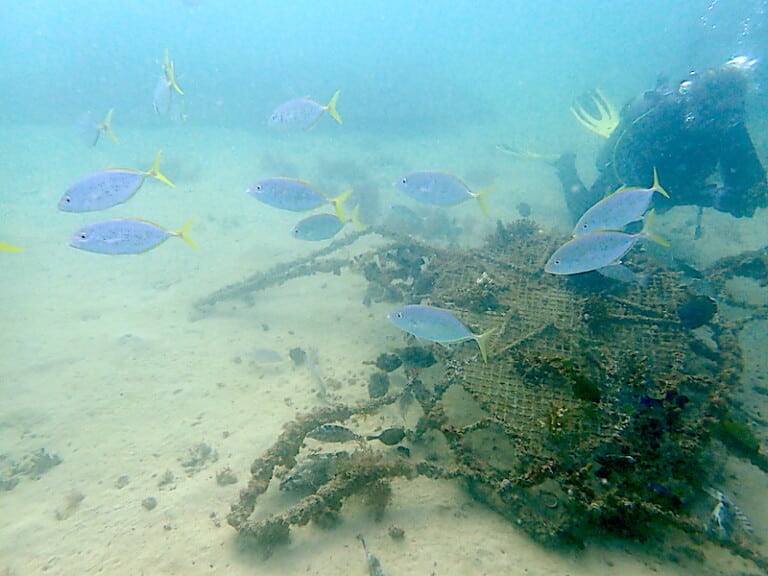
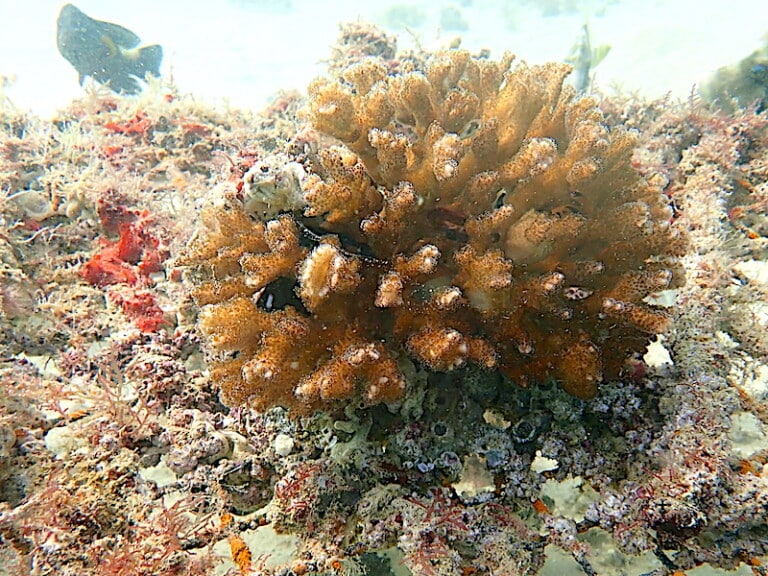
Mandarin Oriental Fan Reef
The Mandarin Oriental Fan reef is by far the largest structure on the site, measuring 12 metres by 6 metres. Eleven fan blades span out to provide a huge surface area upon which we can attach coral fragments.
Currently we have 22 corals planted and they are settling in nicely. Such a large structure will of course take time to be planted fully, as sourcing enough corals to cover it is a large job. The aim for the coming warmer months is to fully plant this structure and when it is fully planted it should accommodate at least 100 larger coral colonies.
We are currently waiting on the growth of the corals on the nursery tables to reach around 10cm diameter, so that they are mature enough to be transplanted.
We will also source naturally broken coral fragments from the nearby natural reef, Dibba Rock, however larger broken fragments are a lot rarer than small individual “finger” fragments. The smaller fragments are better suited for planting on the nursery tables to further mature.
There was minor damage to uprights supporting two of the eleven blades when the supports gave way during the winter storms. This was easily repaired. Data sets will be available for this reef once the structure is fully planted. Photographs can be found on the Flickr database.
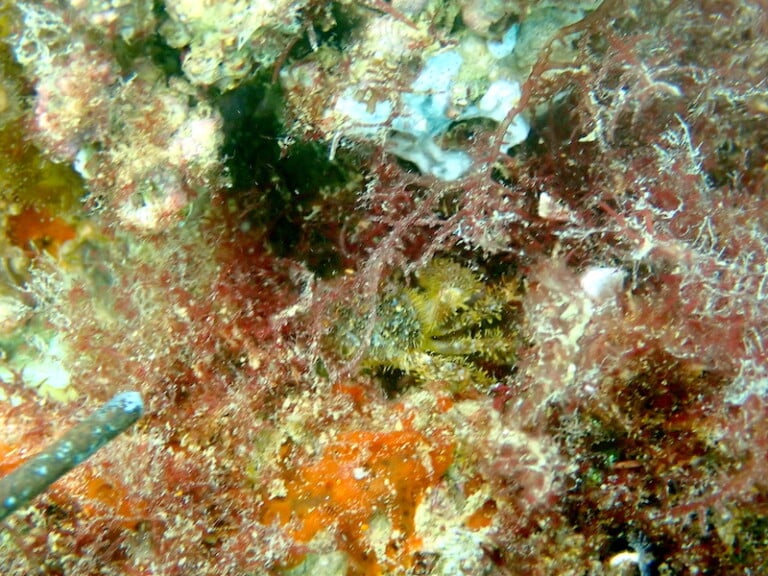

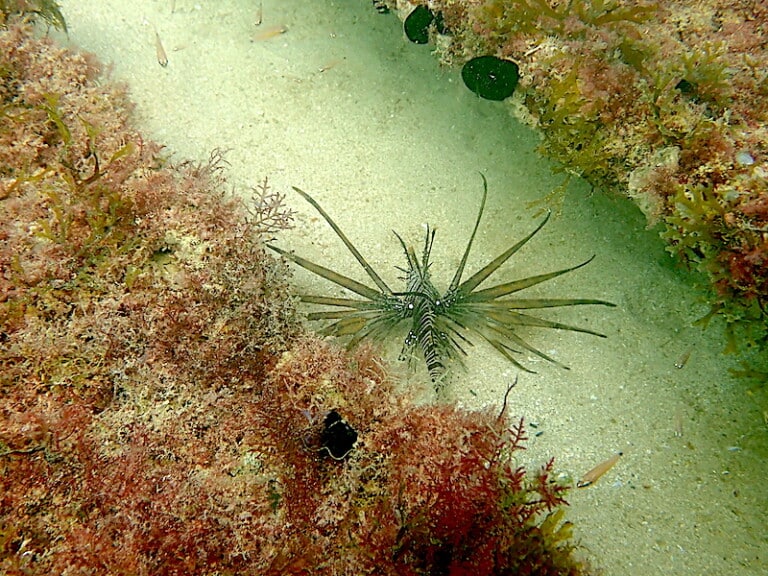
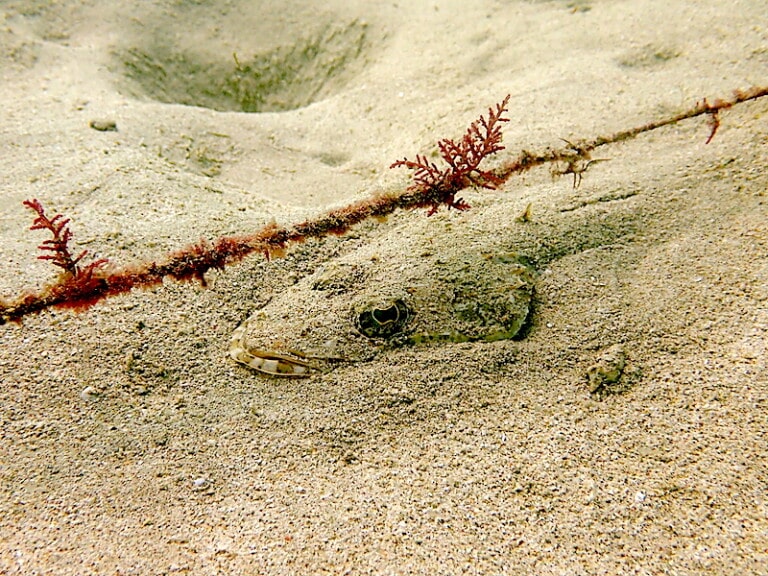
OUNASS Tables
An unfortunate combination of recent weather conditions and the nature of the structures has caused significant damage to these structures.
Once the weather and sea conditions have calmed down as we go into the warmer months, we plan to salvage what we can and replace what we can’t. It’s still supporting life such as a guitar shark and a school of bat fish, although unfortunately at this point it is not viable as a place to transplant coral.
Scotch & Soda Reef
The ampersand shaped logo artificial reef for Scotch & Soda Is doing fantastically well and appears to be a breeding ground for Indian dragon nudibranch Phidiana indica and is currently covered in nudibranchs and eggs.
As good as this may sound, volunteers (especially those with cameras) seem to spend a disproportionate amount of time “maintaining” this reef, which has made for some beautiful photographs which can be found with all the other photographs on the Flickr database.
The five Pocillopora coral colonies planted on the artificial reef are doing well and the details can be found on the table below:

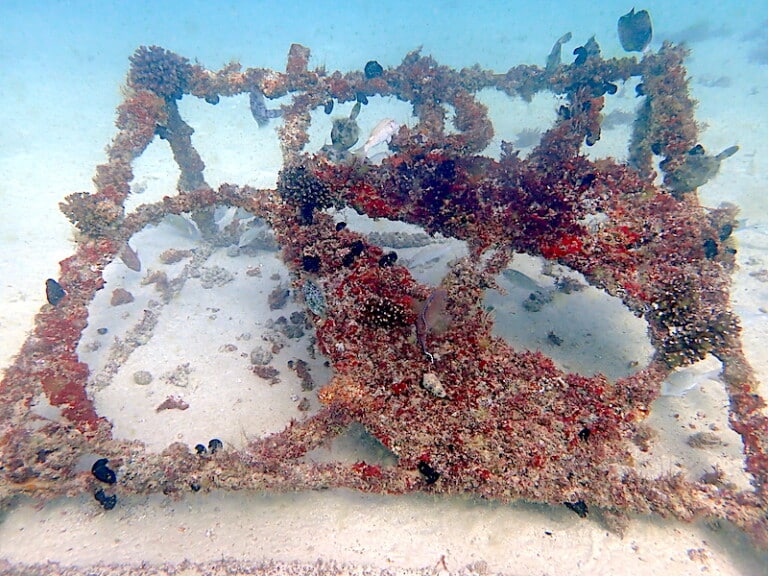
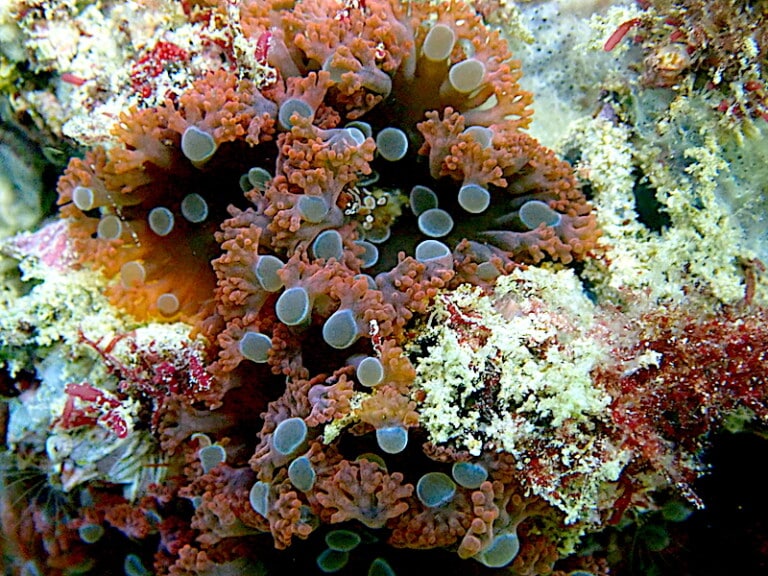

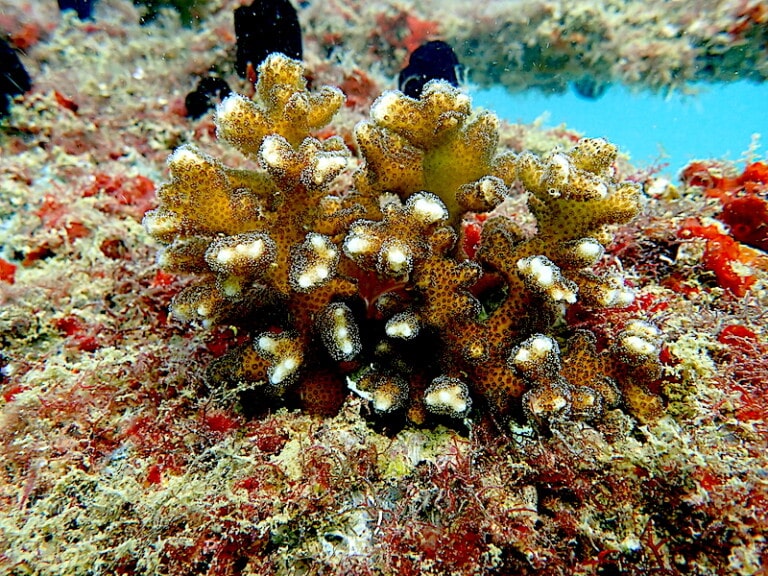

Upfill. Artificial Reef
The Upfill. United Arab Emirates Map table has picked up the nickname “Turtle Bed” on the project, as it seems that at least one turtle can always be found grazing away at the algal growth on the table. As the team and volunteers continue with the maintenance work, the turtle nonchalantly continues with its day, apart from the odd inquisitive glance at our work.
There are currently eight coral colonies planted on this structure, details can be found in the table below:

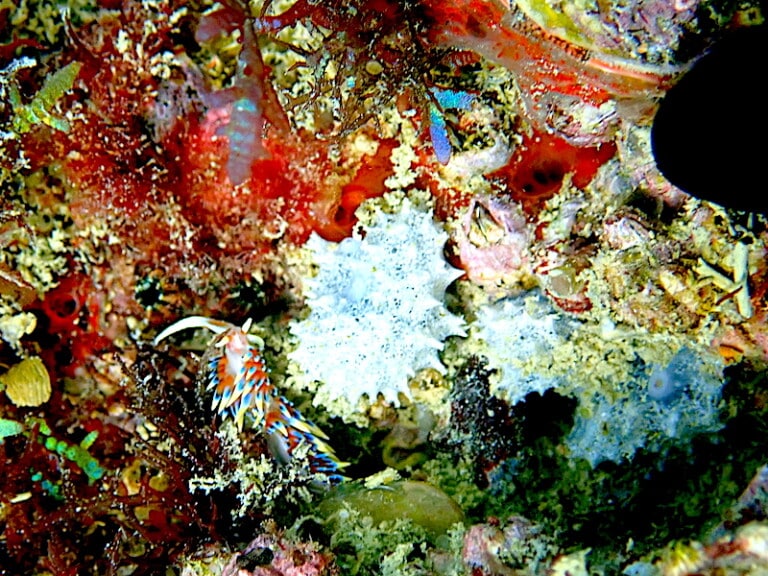

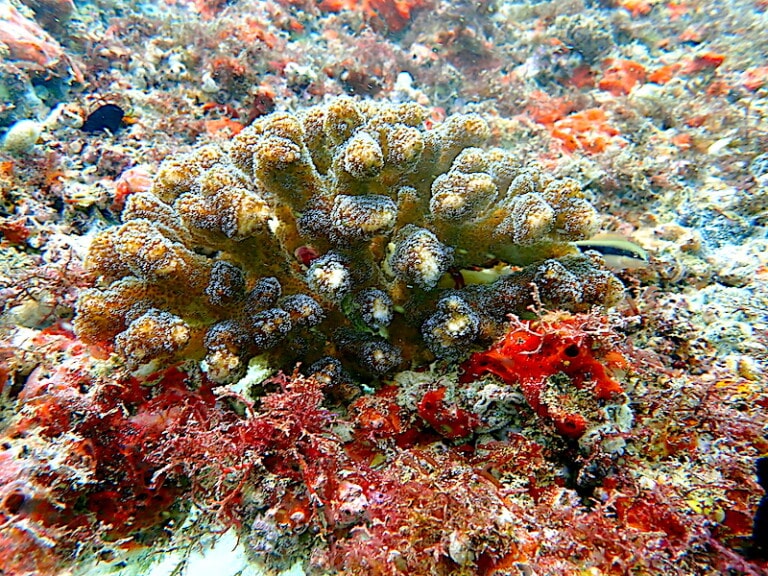
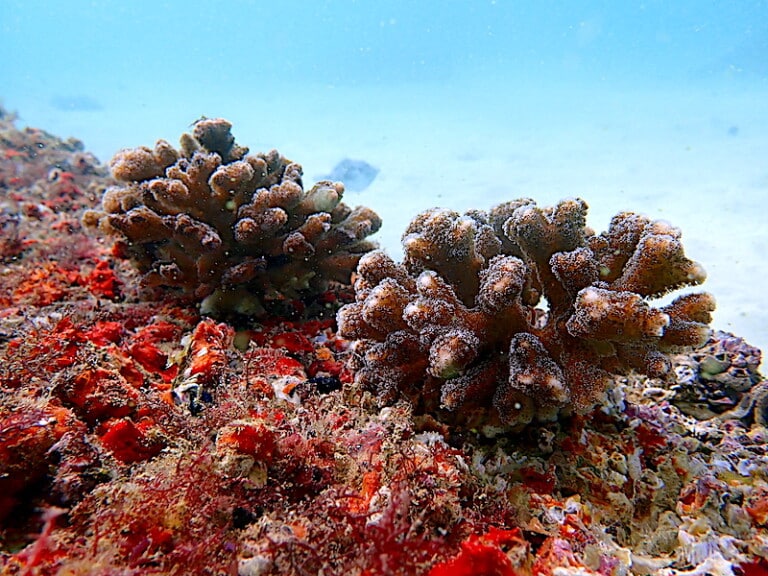
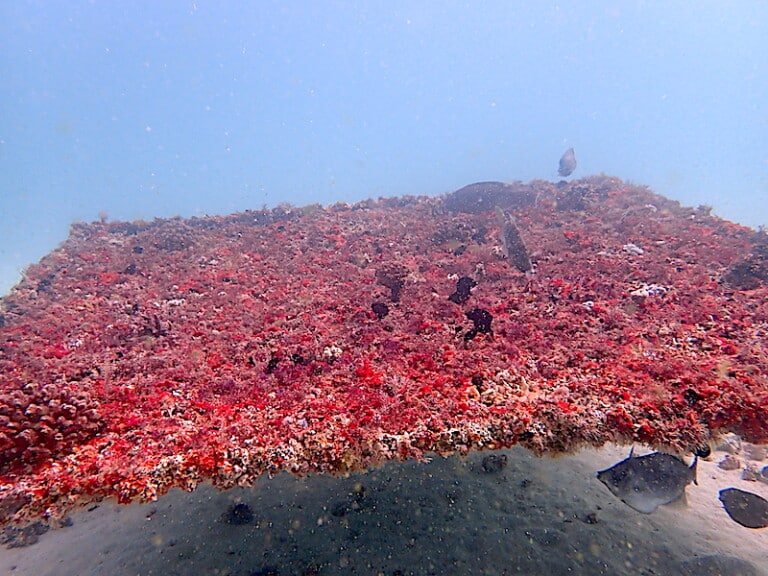
Vanessa Turtle Reef
Vanessa, one of our valued volunteers, personally sponsored this turtle. The turtle structures have proved over time that this design is not just aesthetically pleasing, it is also strong and perfect for the site.
There are five coral colonies planted on this structure, the details of which can be found in the table below, photos of the reef can be found below and on the Flickr database.


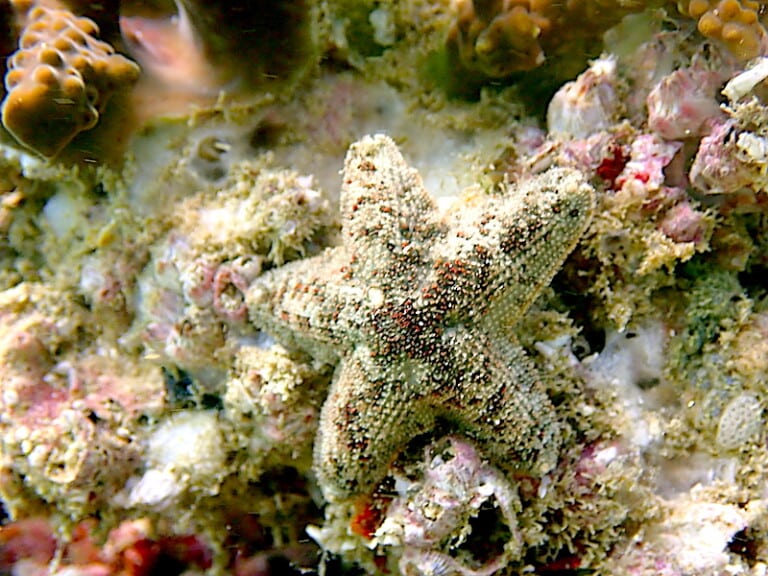
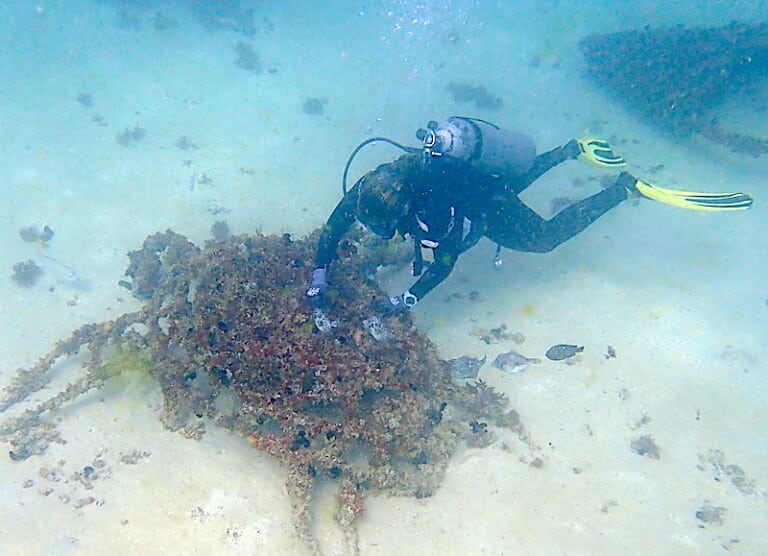
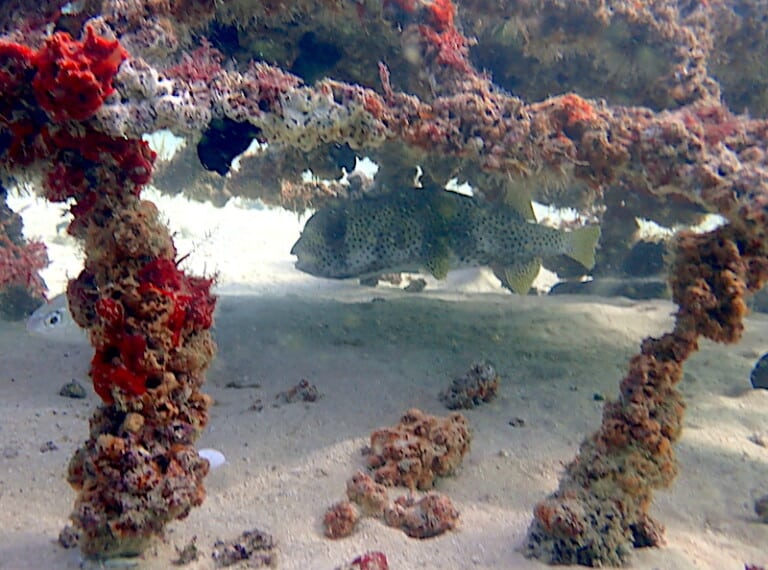
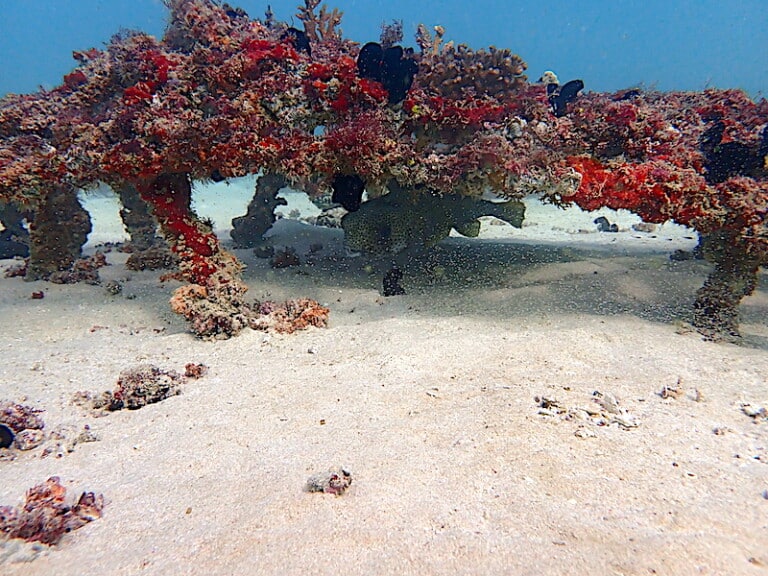
X-press Feeders Whaleshark
Another of our larger structures, this reef seems to be under a permanent haze of swarming fish fry, which is of course fantastic news for the local marine life and especially that these artificial structures are acting as a safe haven for juvenile species, which will in turn help to replenish local fish stocks.
Of particular note on this reef is a healthy large Acropora valida colony on the “nose” of the shark structure. With an aerial perspective 2d surface area of 304cm2 it is currently the second largest colony on the Octopus Garden site.
Details of the coral on the reef can be found in the table below and photos of the reef can be found on the Flickr database.

